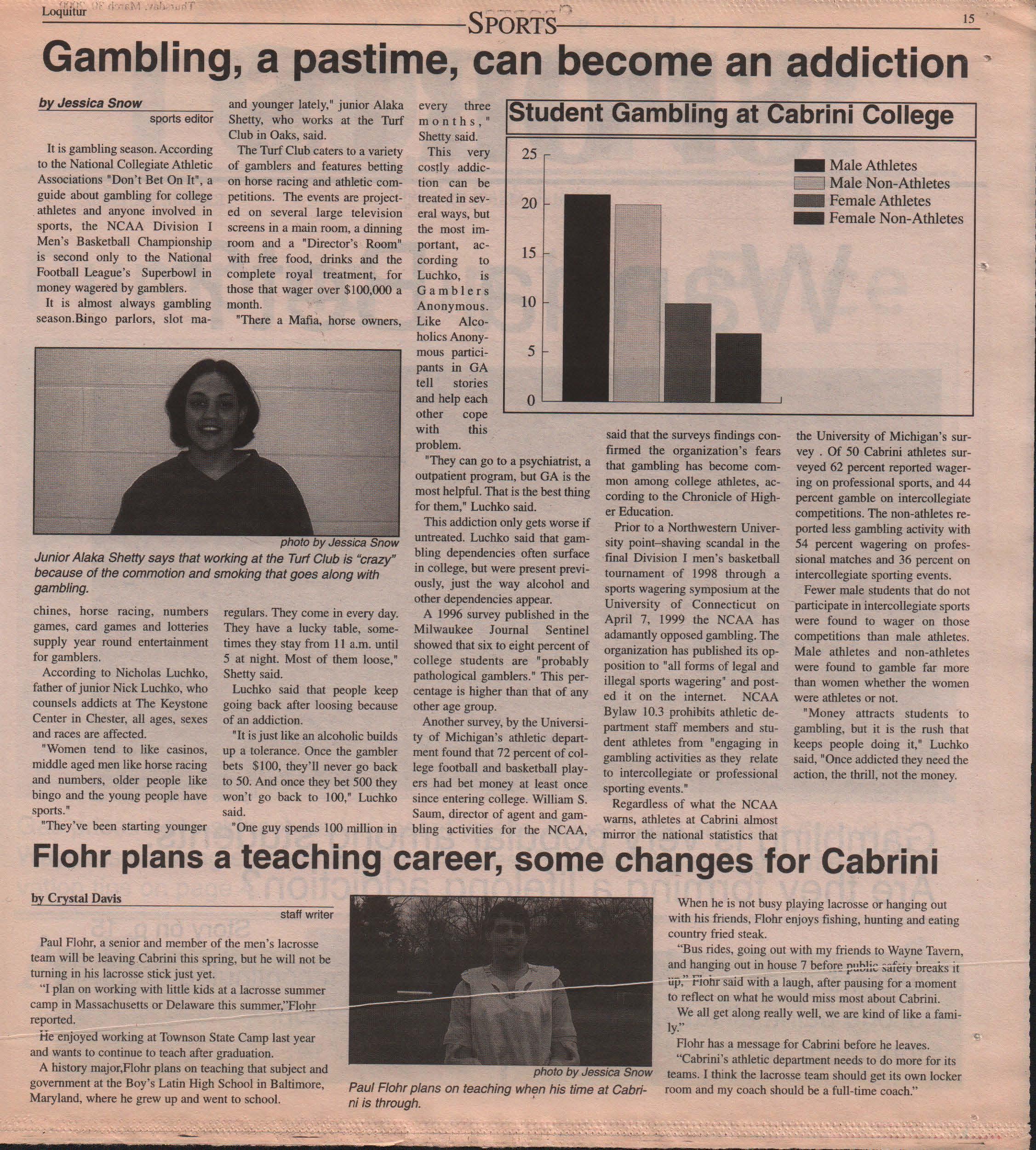
2 minute read
!Student Gambling at Cabrini College
- Male Athletes
C=:JMale Non-Athletes
Advertisement
20 15 10 5 0
"They can go to a psychiatrist, a outpatient program, but GA is the most helpful. That is the best thing for them," Luchko said.
- Female Athletes
- Female Non-Athletes
Junior A/aka Shetty says that working at the Turf Club is "crazy" because of the commotion and smoking that goes along with gambling.
chines, horse racing, numbers games, card games and lotteries supply year round entertainment for gamblers.
According to Nicholas Luchko, father of junior Nick Luchko, who counsels addicts at The Keystone Center in Chester, all ages, sexes and races are affected.
"Women tend to like casinos, middle aged men like horse racing and numbers, older people like bingo and the young people have sports."
"They've been starting younger regulars. They come in every day. They have a lucky table, sometimes they stay from 11 a.m. until 5 at night. Most of them loose," Shetty said.
Luchko said that people keep going back after loosing because of an addiction.
"It is just like an alcoholic builds up a tolerance. Once the gambler bets $100, they'll never go back to 50. And once they bet 500 they won't go back to 100," Luchko said.
"One guy spends 100 million in
This addiction only gets worse if untreated. Luchko said that gambling dependencies often surface in college, but were present previously, just the way alcohol and other dependencies appear.
A 1996 survey published in the Milwaukee Journal Sentinel showed that six to eight percent of college students are "probably pathological gamblers." This percentage is higher than that of any other age group.
Another survey, by the University of Michigan's athletic department found that 72 percent of college football and basketball players had bet money at least once since entering college. William S. Saum, director of agent and gambling activities for the NCAA, said that the surveys findings confirmed the organization's fears that gambling has become common among college athletes, according to the Chronicle of Higher Education.
Prior to a Northwestern University point-shaving scandal in the final Division I men's basketball tournament of 1998 through a sports wagering symposium at the University of Connecticut on April 7, 1999 the NCAA has adamantly opposed gambling. The organization has published its opposition to "all forms of legal and illegal sports wagering' and posted it on the internet. NCAA Bylaw 10.3 prohibits athletic department staff members and student athletes from "engaging in gambling activities as they relate to intercollegiate or professional sporting events."
Regardless of what the NCAA warns, athletes at Cabrini almost mirror the national statistics that the University of Michigan's survey Of 50 Cabrini athletes surveyed 62 percent reported wagering on professional sports, and 44 percent gamble on intercollegiate competitions. The non-athletes reported less gambling activity with 54 percent wagering on professional matches and 36 percent on intercollegiate sporting events.
Fewer male students that do not participate in intercollegiate sports were found to wager on those competitions than male athletes. Male athletes and non-athletes were found to gamble far more than women whether the women were athletes or not.
"Money attracts students to gambling, but it is the rush that keeps people doing it," Luchko said, "Once addicted they need the action, the thrill, not the money.







